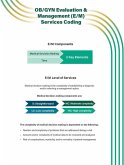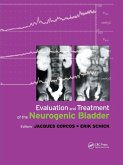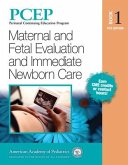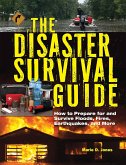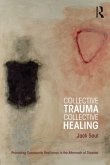- Broschiertes Buch
- Merkliste
- Auf die Merkliste
- Bewerten Bewerten
- Teilen
- Produkt teilen
- Produkterinnerung
- Produkterinnerung
A definitive guide to applying modern methods of evaluation science to assess the effectiveness of medical and public health responses to disasters. This practical manual provides a range of reliable methods and robust approaches for the gathering and analyzing of data.
Andere Kunden interessierten sich auch für
![Exploring Disaster Human Services for Children and Youth Exploring Disaster Human Services for Children and Youth]() National Academies of Sciences Engineering and MedicineExploring Disaster Human Services for Children and Youth37,99 €
National Academies of Sciences Engineering and MedicineExploring Disaster Human Services for Children and Youth37,99 €![Ob/GYN Evaluation & Management (E/M) Services Coding Quick Reference Guide Ob/GYN Evaluation & Management (E/M) Services Coding Quick Reference Guide]() Of Obstetricians and American College GynecologistsOb/GYN Evaluation & Management (E/M) Services Coding Quick Reference Guide18,99 €
Of Obstetricians and American College GynecologistsOb/GYN Evaluation & Management (E/M) Services Coding Quick Reference Guide18,99 €![Contemporary Psychotherapists Examine Themselves; an Evaluation of Facts and Values Based Upon Guided Interviews With Forty-three Representatives of Various Schools Contemporary Psychotherapists Examine Themselves; an Evaluation of Facts and Values Based Upon Guided Interviews With Forty-three Representatives of Various Schools]() Werner WolffContemporary Psychotherapists Examine Themselves; an Evaluation of Facts and Values Based Upon Guided Interviews With Forty-three Representatives of Various Schools26,99 €
Werner WolffContemporary Psychotherapists Examine Themselves; an Evaluation of Facts and Values Based Upon Guided Interviews With Forty-three Representatives of Various Schools26,99 €![Evaluation and Treatment of the Neurogenic Bladder Evaluation and Treatment of the Neurogenic Bladder]() Evaluation and Treatment of the Neurogenic Bladder80,99 €
Evaluation and Treatment of the Neurogenic Bladder80,99 €![Pcep Book 1: Maternal and Fetal Evaluation and Immediate Newborn Care Pcep Book 1: Maternal and Fetal Evaluation and Immediate Newborn Care]() Pcep Book 1: Maternal and Fetal Evaluation and Immediate Newborn Care77,99 €
Pcep Book 1: Maternal and Fetal Evaluation and Immediate Newborn Care77,99 €![The Disaster Survival Guide The Disaster Survival Guide]() Marie D JonesThe Disaster Survival Guide24,99 €
Marie D JonesThe Disaster Survival Guide24,99 €![Collective Trauma, Collective Healing Collective Trauma, Collective Healing]() Jack SaulCollective Trauma, Collective Healing43,99 €
Jack SaulCollective Trauma, Collective Healing43,99 €-
-
-
A definitive guide to applying modern methods of evaluation science to assess the effectiveness of medical and public health responses to disasters. This practical manual provides a range of reliable methods and robust approaches for the gathering and analyzing of data.
Hinweis: Dieser Artikel kann nur an eine deutsche Lieferadresse ausgeliefert werden.
Hinweis: Dieser Artikel kann nur an eine deutsche Lieferadresse ausgeliefert werden.
Produktdetails
- Produktdetails
- Verlag: Oxford University Press (UK)
- Seitenzahl: 224
- Erscheinungstermin: 17. Dezember 2019
- Englisch
- Abmessung: 231mm x 154mm x 15mm
- Gewicht: 383g
- ISBN-13: 9780198796862
- ISBN-10: 0198796862
- Artikelnr.: 56723938
- Herstellerkennzeichnung
- Libri GmbH
- Europaallee 1
- 36244 Bad Hersfeld
- gpsr@libri.de
- Verlag: Oxford University Press (UK)
- Seitenzahl: 224
- Erscheinungstermin: 17. Dezember 2019
- Englisch
- Abmessung: 231mm x 154mm x 15mm
- Gewicht: 383g
- ISBN-13: 9780198796862
- ISBN-10: 0198796862
- Artikelnr.: 56723938
- Herstellerkennzeichnung
- Libri GmbH
- Europaallee 1
- 36244 Bad Hersfeld
- gpsr@libri.de
Dr Edmund Ricci is Emeritus Professor of Sociology in Public Health and founding Director of the Institute for Evaluation in Public Health, both based in the University of Pittsburgh's, Graduate School of Public Health. He is an internationally recognized evaluation scientist who has designed and guided globally more than 300 program and policy oriented studies, including those designed to improve the medical and public health response to disasters. He currently serves as a member of the executive committee of the international Task Force on Quality Control of Disaster Management. Ernesto A. Pretto, Jr. M.D., M.P.H. (Epidemiology) is Professor of Clinical Anesthesiology, University of Miami Miller School of Medicine, and Adjunct Professor in the Graduate School of Public Health, University of Pittsburgh. Dr. Pretto is a Diplomate of the American Board of Anesthesiologists with Special Qualifications in Critical Care Medicine. Dr. Pretto's research has covered a wide range of fields in Medicine and Public Health. He has conducted post disaster field surveys in earthquakes in Armenia (1988), Costa Rica (1991), Turkey (1992), California (1994), and Japan (1995), during the war in Sarajevo, Bosnia (1993), and after the devastating earthquake in Haiti (2010). Knut Ole Sundnes MD, DiPH. Professor, Centre for Risk Management and Societal Safety at the University of Stavanger and Senior Scientist, Intervention Center, Oslo University Hospital. Dr. Sundnes is a certified specialist of anaesthesia, intensive care medicine and prehospital medicine. He was Head of Anaesthesia, Norwegian Armed Forces Medical Services (1996-2016). He was instrumental to restore the specialty of anaesthesia to Afghanistan (2006-2013). He served as President of the World Association for Disaster and Emergency Medicine from 2001-2005. He is co-editor and co-author of two books on Disaster Research in the Utstein Style and is highly published in the fields of disaster medicine, emergency medicine and anaesthesiology.
Part One: A Comprehensive Framework for Disaster Evaluation
1: A Brief History of Disaster Evaluation Studies
2: A General Framework for Evaluation
3: Introduction to a Model for Disaster Evaluation
4: Components of a Disaster Response System
Part Two: How to Design and Implement a Disaster Evaluation Study
5: Form the Stakeholder Group (Step 1)
6: Formulate Evaluation Questions (Step 2)
7: Construct Logic Model and Research Design (Step 3)
8: Prepare Mixed-Method Data Collection Instruments (Step 4)
9: Construct a Sampling Plan (Step 5)
10: Conduct a "Scout Survey" (Step 6)
11: Select and Train Field Research Team and Collect Data (Step 7)
12: Analyze Data and Prepare a Final Report (Step 8)
13: Ethical Considerations in Disaster Evaluation Studies
14: Epilogue
Appendices
A: Evaluation Questions, Indicators and Data Sources
B: Resources for Program Evaluation Studies
C: Questionnaires Used in past Evaluation Studies
1: A Brief History of Disaster Evaluation Studies
2: A General Framework for Evaluation
3: Introduction to a Model for Disaster Evaluation
4: Components of a Disaster Response System
Part Two: How to Design and Implement a Disaster Evaluation Study
5: Form the Stakeholder Group (Step 1)
6: Formulate Evaluation Questions (Step 2)
7: Construct Logic Model and Research Design (Step 3)
8: Prepare Mixed-Method Data Collection Instruments (Step 4)
9: Construct a Sampling Plan (Step 5)
10: Conduct a "Scout Survey" (Step 6)
11: Select and Train Field Research Team and Collect Data (Step 7)
12: Analyze Data and Prepare a Final Report (Step 8)
13: Ethical Considerations in Disaster Evaluation Studies
14: Epilogue
Appendices
A: Evaluation Questions, Indicators and Data Sources
B: Resources for Program Evaluation Studies
C: Questionnaires Used in past Evaluation Studies
Part One: A Comprehensive Framework for Disaster Evaluation
1: A Brief History of Disaster Evaluation Studies
2: A General Framework for Evaluation
3: Introduction to a Model for Disaster Evaluation
4: Components of a Disaster Response System
Part Two: How to Design and Implement a Disaster Evaluation Study
5: Form the Stakeholder Group (Step 1)
6: Formulate Evaluation Questions (Step 2)
7: Construct Logic Model and Research Design (Step 3)
8: Prepare Mixed-Method Data Collection Instruments (Step 4)
9: Construct a Sampling Plan (Step 5)
10: Conduct a "Scout Survey" (Step 6)
11: Select and Train Field Research Team and Collect Data (Step 7)
12: Analyze Data and Prepare a Final Report (Step 8)
13: Ethical Considerations in Disaster Evaluation Studies
14: Epilogue
Appendices
A: Evaluation Questions, Indicators and Data Sources
B: Resources for Program Evaluation Studies
C: Questionnaires Used in past Evaluation Studies
1: A Brief History of Disaster Evaluation Studies
2: A General Framework for Evaluation
3: Introduction to a Model for Disaster Evaluation
4: Components of a Disaster Response System
Part Two: How to Design and Implement a Disaster Evaluation Study
5: Form the Stakeholder Group (Step 1)
6: Formulate Evaluation Questions (Step 2)
7: Construct Logic Model and Research Design (Step 3)
8: Prepare Mixed-Method Data Collection Instruments (Step 4)
9: Construct a Sampling Plan (Step 5)
10: Conduct a "Scout Survey" (Step 6)
11: Select and Train Field Research Team and Collect Data (Step 7)
12: Analyze Data and Prepare a Final Report (Step 8)
13: Ethical Considerations in Disaster Evaluation Studies
14: Epilogue
Appendices
A: Evaluation Questions, Indicators and Data Sources
B: Resources for Program Evaluation Studies
C: Questionnaires Used in past Evaluation Studies



